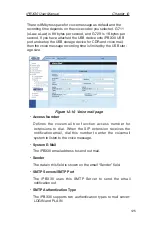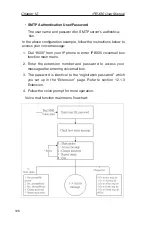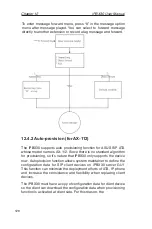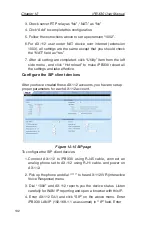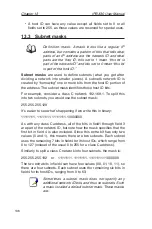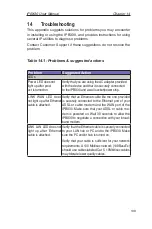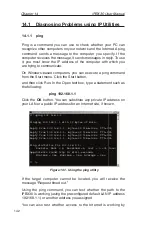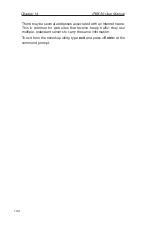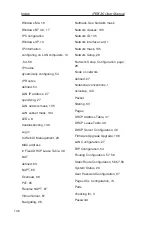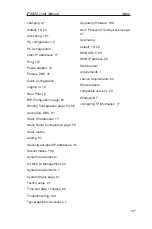
Chapter 13
iPBX30 User Manual
136
• A host ID can have any value except all fields set to 0 or all
fields set to 255, as those values are reserved for special uses.
13.3 Subnet masks
Definition: mask: A mask looks like a regular IP
address, but contains a pattern of bits that tells what
parts of an IP address are the network ID and what
parts are the host ID: bits set to 1 mean “this bit is
part of the network ID” and bits set to 0 mean “this bit
is part of the host ID.”
Subnet masks
are used to define subnets (what you get after
dividing a network into smaller pieces). A subnet’s network ID is
created by “borrowing” one or more bits from the host ID portion of
the address. The subnet mask identifies these host ID bits.
For example, consider a class C network 192.168.1. To split this
into two subnets, you would use the subnet mask:
255.255.255.128
It’s easier to see what’s happening if we write this in binary:
11111111. 11111111. 11111111.10000000
As with any class C address, all of the bits in field1 through field 3
are part of the network ID, but note how the mask specifies that the
first bit in field 4 is also included. Since this extra bit has only two
values (0 and 1), this means there are two subnets. Each subnet
uses the remaining 7 bits in field4 for its host IDs, which range from
0 to 127 (instead of the usual 0 to 255 for a class C address).
Similarly, to split a class C network into four subnets, the mask is:
255.255.255.192 or 11111111. 11111111. 11111111.11000000
The two extra bits in field4 can have four values (00, 01, 10, 11), so
there are four subnets. Each subnet uses the remaining six bits in
field4 for its host IDs, ranging from 0 to 63.
Sometimes a subnet mask does not specify any
additional network ID bits, and thus no subnets. Such
a mask is called a default subnet mask. These masks
are:
Содержание iPBX30
Страница 1: ...iPBX30 User Manual E2883 December 2006 ...
Страница 151: ......




